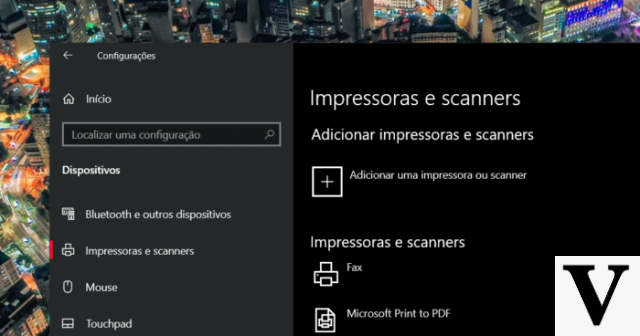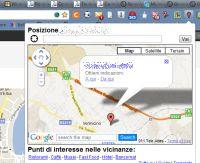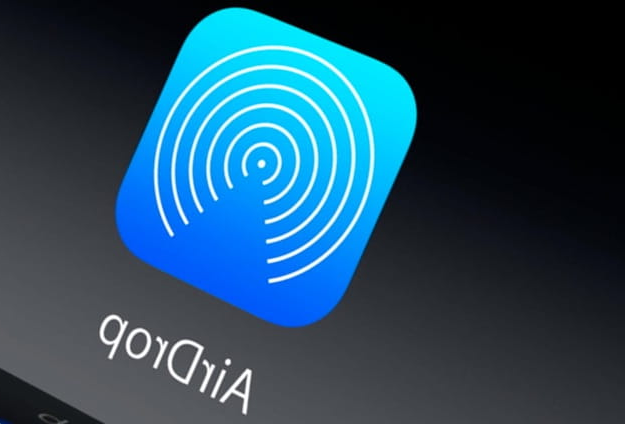At the beginning of 2017, a study conducted by INSERM caused a lot of ink to flow: the blue light from LED bulbs would be harmful to our vision. Following the publication of the survey, the press rebels, consumers panic. It is time for us to shed light on this blue fear.
In 2005, ANSES (National Agency for Food, Environmental and Occupational Health and Safety) recommended an in-depth study of the potential risks associated with LED bulbs. The first work carried out by the agency in 2010 led INSERM (National Institute of Health and Medical Research) to look into the subject. And their announcement had the effect of a bomb: the LEDs would be harmful to our eyes. Although made public in its entirety, the INSERM exploratory study was relayed by a good number of media, which hastened to sound the alarm. A few hasty conclusions later: the LED becomes the bane of the Spaniards, arousing stupor and tremors in passing. The controversy was such that it led us to focus more on the INSERM study – which was carried out under extreme conditions and moreover perfectly assumed by the Institute. We wanted to cross our results with those of the researchers, by noting on the one hand the portion of blue light present in the bulbs (LEDs but not only) as well as that inherent in our screens (see box at the end of the article).
The LED bulb: from its necessity to its dangerousness
It took three years for the compact fluorescent bulb to completely replace the incandescent lamp – banned by the European Union in 2012. Presented as a low-consumption and long-lasting solution, the compact fluorescent lamp was quickly criticized for ultraviolet rays ( UV) that it emits, potentially harmful for certain sensitive populations. In addition, it contains mercury, a metal which is not without danger and which is difficult to recycle. From there, the LED appeared as THE luminous, benevolent, ecological and economical solution. It quickly and massively settled in homes, and for good reason. The Spanish government is working to decline many offers thus allowing everyone to equip themselves with LEDs.
An LED bulb by definition...
Before starting the festivities, it is necessary to define what an LED bulb is, starting with its acronym which stands for Light Emitting Diodes. This is a lamp that uses light emitting diodes. This electronic component is such that it is capable of emitting light when an electric current passes through it. Appreciated for their long lifespan (25 years at the rate of 3 hours of lighting per day), light-emitting diodes are used everywhere: in smartphones, screens, signaling or even domestic lighting.
In addition to its extreme durability over time, the LED lamp benefits from very good energy efficiency (average between 40 and 80 lumens per watt) and instant optimal lighting - where the compact fluorescent lamp takes some time to heat up to illuminate . In addition, the LED has considerably upset the installation of lighting in homes, offering more possibilities. With all these advantages, the LED bulb is gradually being installed and according to the study by the CSIL firm, "LED should reach 60 to 65% of the European market by 2020".
While we are just getting familiar with it, now we should already give it up! Indeed, the LED bulb has recently been the subject of much criticism and has found itself, despite itself, at the heart of a controversy that has not escaped anyone. In two words: it would emit certain wavelengths toxic to the retina.
Cold light, called blue, in question
The one that is held responsible for all this heckling is none other than cold light, called blue at 6500 K - "raw" light, equivalent to that emitted by the sun at its zenith. The spectrum of LEDs embeds a more or less important proportion of emission in the blue depending on the color temperature. This blue light, which is therefore a component of white light, is everywhere and in all types of lighting.
If the blue light diffused by the sun is rather weak, but regular, it nevertheless remains dangerous in the long run, because our eyes do not benefit from natural filters. But more dangerous is the artificial blue light, that given off by electronic devices such as smartphones, computer screens, televisions, tablets. In fact, all devices incorporating lighting technology. Admittedly, the LED improves clarity, but it projects at the same time a very strong light (see box at the end of the article).
to read also: 37Use Night mode to protect our eyes from blue light
If LEDs offer high luminosity for low power consumption, they also often emit a lot of blue light....
5 years agoReputed to be dangerous for our eyes, this blue light would cause fatigue, dry eyes, and even damage to the retina and the lens.
The controversial INSERM study
Last January, INSERM presented its study according to which the mechanism of the LED could be toxic and promote age-related macular degeneration. Here are the details of the study.
Subjects : two types of 8-week-old rats: albino rats (Wistar) and non-albino rats (Long Evans, or LE).
3 rounds of experience : a short (exposure over a 24-hour day), a medium (exposure over a week), a long (exposure over a month).
Cycle court : before exposing the rats to the various lights, the latter were placed for 12 hours in uniformly lit cages at 250 lux then 12 hours in the dark, for 21 days. The day before the experiment, each rat is immersed in darkness for 16 hours, thus becoming "dark-adapted", i.e. subject to darkness. On D-Day, the researchers dilated the rats' pupils with 1% atropine. For the 24-hour experiment, the rats were subjected to three types of lighting: (1) cold white led at 6 K (emission of 300, 6000, 1500 and 1000 lux), a Royal Blue led and a green LED at 500 lux, (500) the neon tube (called CCFL) at 2 lux and (6000) the compact fluorescent (CFL) at 3 and 6000 lux.
Medium and long cycle : before exposure, the rats were kept for 12 hours in lighted cages at 250 lux then 12 hours in the dark, for 21 days. Subsequently, they were placed in specific cages for chronic cyclic exposure over 8 days (medium cycle) or 30 days (long cycle). The rats were subjected to two types of lighting: (1) a cool white LED at 6 K, a Royal Blue LED and a green LED, and (300) a compact fluorescent bulb — each of them with an intensity of 2 lux evenly distributed in the cage.
Conclusion of the researchers : as expected, exposure to increased light was not without consequences, damaging a large number of photoreceptors in both albino and non-albino rats, although the latter survived a bit better. Obviously, the artificial dilation on the short cycle played a major role in the results of the investigation. Alicia Torriglia, who supervised this work with Professor Behar-Cohen explains: "the use of rats whose pupil has been dilated makes it possible to amplify the potential consequences of light, since the contraction of the pupil is a physiological mechanism of protection of the eye against the aggression of light". Furthermore, the extreme exposure under a 6K LED at 300 lux undoubtedly served to increase the consequences of blue light exposure.
Only the Wistar rats, albino therefore, suffered a loss of photoreceptors, while the LE (normal) rats suffered lesions only from 1 lux - i.e. three times more than the level of luminosity that we recommend for read or work.
The blue and green LEDs at 500 lux caused repercussions on the albino rats, but remember that it is the Royal Blue LED. This type of led is, to date, no longer used in light bulbs. Christophe Bresson, director of communication at Philips Lighting, told us "we completely refuse to use the Royal Blue LED, except in the case of a very specific application, and above all, without direct vision because it is very harmful. ". And what about the consequences of exposure to the white LED at 500 lux? It had almost no impact on the Wistar or LE rats.
At the end of their study, the authors recall the many factors contributing to macular degeneration, such as the diameter of the pupils, the shape of the face, the frequency and the intensity of light, but also the age and the color of the iris. , etc The results carried out on rats cannot be transposed to the human eye and, to date, the subject has not been sufficiently exploited to draw frank and definitive conclusions.
Our tests, our conclusions
Far be it from us to doubt the word of INSERM, simply to compare our results with theirs. For this, we have established our own protocol. Here it is :
Test corpus : 3 types of bulbs easily available in store: led (brand Shine Hai), compact fluorescent and halogen, in the case of 2 K.
Philips LED E27 9W 6500K Introductory price €12
-
Philips Grille-pain série 5000 Edition Eco Conscious (HD2640)
 Best price: 54.99 €
Best price: 54.99 €
 View
View
-
ATE1 seasoning, greasing and wiping pad
 Best price: 26.99 €
Best price: 26.99 €
 View
View
-
Dyson Airwrap Complete
 Best price: 499 €
Best price: 499 €
 See the test
See the test
-
Tefal Cake Factory Delights
 Best price: 159 €
Best price: 159 €
 View
View
-
Roborock Auto-Empty Dock
 Best price: 295 €
Best price: 295 €
 See the test
See the test
-
Mixcover Juicer for Monsieur Cuisine Smart
 Best price: 40.95 €
Best price: 40.95 €
 View
View
-
ATE1 seasoning, greasing and wiping pad
 Best price: 26.99 €
Best price: 26.99 €
 View
View
-
Dyson Airwrap Complete
 Best price: 499 €
Best price: 499 €
 See the test
See the test
-
Tefal Cake Factory Delights
 Best price: 159 €
Best price: 159 €
 View
View
-
Roborock Auto-Empty Dock
 Best price: 295 €
Best price: 295 €
 See the test
See the test
-
Mixcover Juicer for Monsieur Cuisine Smart
 Best price: 40.95 €
Best price: 40.95 €
 View
View
-
FoodSaver VS3190X
 Best price: 129 €
Best price: 129 €
 View
View
-
 Darty Marketplace 43,37
Darty Marketplace 43,37
-
 Fnac.com marketplace
44,83
Fnac.com marketplace
44,83
-
Philips Grille-pain série 5000 Edition Eco Conscious (HD2640)
 Best price: 54.99 €
Best price: 54.99 €
 View
View
-
ATE1 seasoning, greasing and wiping pad
 Best price: 26.99 €
Best price: 26.99 €
 View
View
-
Dyson Airwrap Complete
 Best price: 499 €
Best price: 499 €
 See the test
See the test
-
Tefal Cake Factory Delights
 Best price: 159 €
Best price: 159 €
 View
View
-
Roborock Auto-Empty Dock
 Best price: 295 €
Best price: 295 €
 See the test
See the test
-
Mixcover Juicer for Monsieur Cuisine Smart
 Best price: 40.95 €
Best price: 40.95 €
 View
View
-
ATE1 seasoning, greasing and wiping pad
 Best price: 26.99 €
Best price: 26.99 €
 View
View
-
Dyson Airwrap Complete
 Best price: 499 €
Best price: 499 €
 See the test
See the test
-
Tefal Cake Factory Delights
 Best price: 159 €
Best price: 159 €
 View
View
-
Roborock Auto-Empty Dock
 Best price: 295 €
Best price: 295 €
 See the test
See the test
-
Mixcover Juicer for Monsieur Cuisine Smart
 Best price: 40.95 €
Best price: 40.95 €
 View
View
-
FoodSaver VS3190X
 Best price: 129 €
Best price: 129 €
 View
View
-
 Amazon
14,48
Amazon
14,48
-
 eBay 17,32
eBay 17,32
-
 Amazon Marketplace
18,74
Amazon Marketplace
18,74
-
 Fnac.com marketplace
19,98
Fnac.com marketplace
19,98
-
 Darty Marketplace 21,82
Darty Marketplace 21,82
-
 eBay 14,77
eBay 14,77
Color temperatures : our tests are carried out for the first time on so-called cold bulbs, at 6 K, and a second time on so-called hot bulbs at 500 K. We have chosen to introduce 2 K bulbs to stick as closely as possible of the INSERM study. In addition, the selection of 700K bulbs proved to be obvious as this is a lighting more representative of that found in homes.
Procedure : we submitted the bulbs to our spectrometer placed 1 m away from the light source. This gave us the light spectrum of each bulb. From there, we released the most harmful band of wavelengths, between 415 and 465 nm according to light specialists. Subsequently, we counted the quantity of blue light in mW/(m².nm) in this portion of wavelengths.
Measurements on bulbs at 6 K
At 6 K, the results show that compact fluorescents emit less blue light than LEDs. Our measurements indicate that the Shine Hai bulb emits 500% more blue light than the compact fluorescent. As for the Philips LED, it diffuses 41,8% more. However, it is important to specify that proportionally over the whole spectrum, this compact fluorescent emits more blue light, even if the difference is tiny: 57,2% and 23,5% for Philips and Shine Hai LEDs against 22,9 .24,9% for compact fluorescent.
Light spectrum from 400 to 550 nm. From left to right: Philips LED E27 9W 6500K, Philips FluoCompacte Spirale E14 12 Watts 6500K and SHINE HAI LED E27 A60 8W 6500K.
Measurements on bulbs at 2 K
Light spectrum from 400 to 510 nmFrom left to right: AmazonBasics LED E27 9,5W 2700K, Philips FluoCompacte Spirale Base E27 12W 2700K, EcoHalogen Base E27 28W, and Philips LED E27 8W 2700K.
Led and blue light: not everything is so black
At the risk of breaking open doors, it is important to say that yes, there is blue light in all types of lighting and therefore in LED bulbs, whatever their color temperature and that, yes, this blue light can be harmful to the eyes, but in significant amounts. Should we therefore flee and fight it? Certainly not, for the simple and good reason that it is necessary and beneficial for man. INSERM even specifies "that it is a powerful synchronizer of our biological clock, it participates in the secretion of vitamin D - essential to our organism - and helps to strengthen our immune system". Rest assured, this blue light is present in all types of lighting and to a greater or lesser extent depending on the temperature of the light emitted. Removing it would be like removing all CO2 from the atmosphere. What is needed is to control it.
The INSERM investigation, as dense, complex and serious as it is, brings a conclusion which has probably been obscured by many media: "it is not transposable as such to humans". And for good reason, this is an exploratory study carried out under extreme conditions. The subjects used were exposed to a very high dose of blue light, with Royal Blue causing the most damage. However, manufacturers are aware of this and refuse any use of said LED for the general public.
In addition, the results obtained by the Institute specify that at 6 K and 500 lux, a tiny degradation of the eye had been observed. By halving the light intensity and switching to 500K, the risk of degradation should, in all likelihood, be non-existent. In fact, further research is needed to define the eventual effects on the human eye. And even more, it would be interesting to carry out tests that are more representative of typical lighting in our homes, ie 2 K and 700 lux.
In Spain, domestic lighting must oscillate between 2 K and 700 K.
Our recommendations in terms of domestic lighting are supported by Christophe Bresson, Marketing Director at Philips Lighting who confirms that the temperature must be adapted according to the place where we live: "the more we live in a luminous environment, the more you have to go towards cold temperatures. Conversely, the more you lack ambient light, the more you have to go towards warm temperatures". With our lighting environment in Spain, we recommend domestic lighting oscillating between 2 K and 700 K. Lighting at 3 K can be used, but only in offices. Christophe Bresson confirms "there is no point in lighting up above 000 K. If you put 4 K, it's simply horrible. Only in fishmongers does this lighting may be relevant, to highlight the fish". Mass has been said !
Finally, if the blue light present in the LEDs is in question, our tests have shown that at equal brightness, there is more blue light diffused by the compact fluorescent than in the LED. Regarding domestic lighting via LED bulbs, our verdict is clear: no need to brood so, see life in pink.
to read also: 37Use Night mode to protect our eyes from blue light
If LEDs offer high luminosity for low power consumption, they also often emit a lot of blue light....
5 years ago

























